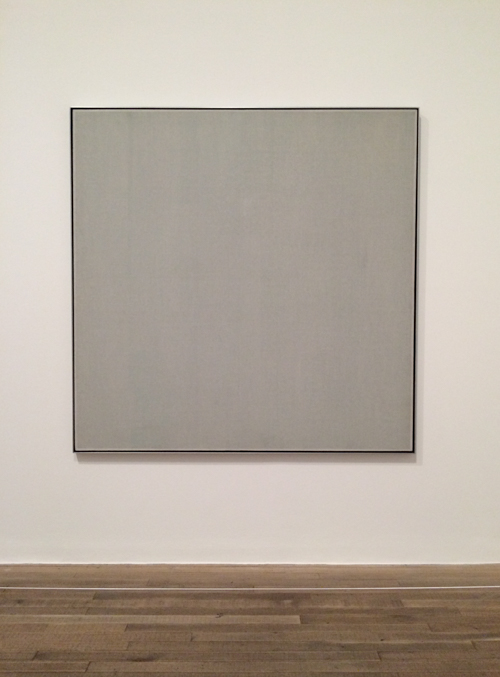Walking through this engaging retrospective at the Tate is like seeing someone’s purpose come into focus and then slowly dissipate again. A slightly overloaded first room shows Malevich trying out various styles of his time including Impressionism, Fauvism and Symbolism. There are some radiant small tempera paintings in which he deals with Christian themes in a manner which recalls Indian miniature painting. A slightly lumpen manner of portraying Russian village life followed this before he got to grips with Cubism and Futurism at once, coming up with a style by turns reminiscent of Cubism and Léger. ‘Alogical painting’, the combining of various elements which made no sense, such as a cow and violin portrayed at widely differing scales in the same image, was one of the many ideas that seemed to fit with Malevich’s adaptation of synthetic cubism and its use of collage.
Alogical painting seemed to provide a stepping stone for Malevich to abandon representation altogether and begin what he called Suprematism. The best known Suprematist work is the stark Black Square, and although the original Black Square is too fragile to travel there are two later examples here, one of which crowns a partial reconstruction of the so-called ‘Last Exhibition of Futurist Painting 0.10’. This featured an array of Suprematist paintings, all using flatly painted geometric shapes in a wide variety of combinations. Only nine of those works are shown here, but it’s enough to bring the past to life. The placing of the Black Square in the upper corner of the room is often discussed in terms of that being the usual place for Russian icons in a home, but as the curators point out Vladimir Tatlin also placed some of his relief sculptures in the same position in another part of the same show. As they have found space for some works by Malevich’s colleague Olga Rozanova, it might have been good to see some of Tatlin’s work here too, to expand on the context of the exhibition.
Malevich had found his style and an intellectual justification for it. Declaring Suprematism to be the beginning of a new culture, he continued to paint in this manner until the early 1920s. Colour gave way to white on white canvases, and the dissolution of coloured form is made graphic in two paintings here which show coloured planes with their edges dissolving into white space.
For a time he gave up painting altogether and transferred his energies to architecture and teaching, represented here by reproductions of some his architectons, geometric plaster models of futuristic buildings, and a bewildering display of some of his large scale teaching diagrams. The catalogue translates the content of some of these, and translations would have been helpful in the exhibition itself.
After the exhilaration of witnessing Malevich’s invention of a new form of painting and architecture, the last two rooms of the show are something of a disappointment. In the late 1920s Malevich returned to figurative painting, firstly picking up a style he had tried 15 years earlier and depersonalising it in paintings such as the Sportsmen of 1930-1 which shows a row of faceless figures resembling crude mannequins. But then Malevich went further back, to imitating earlier styles of painting and even depicting himself as a kind of Florentine merchant. There are some signs of Suprematist style – boldly coloured geometric forms in some of the outfits, for example – and some of the paintings are signed with a black square, but it seems a sadly retrograde step for someone who had so boldly declared that figurative artists of the past were ‘counterfeiters’ of nature.
Tate Modern, London. 16th July – 26th October 2014
